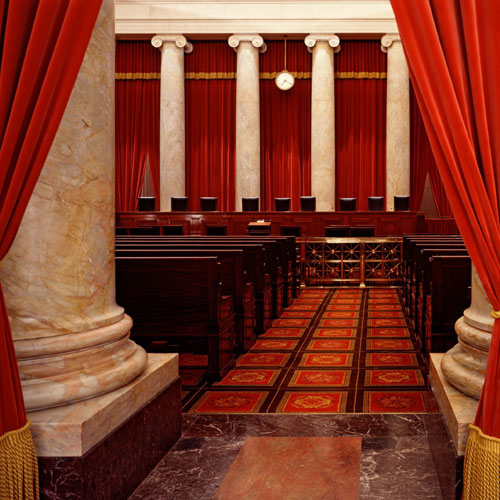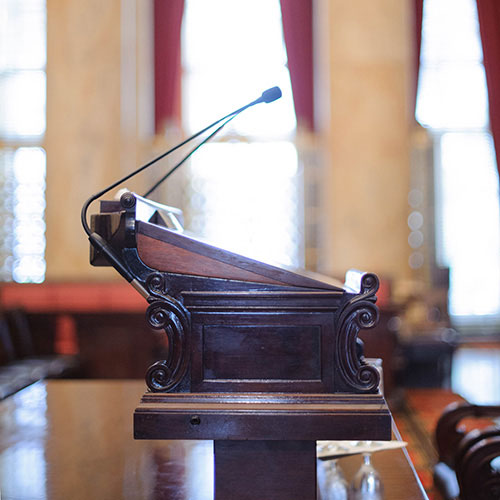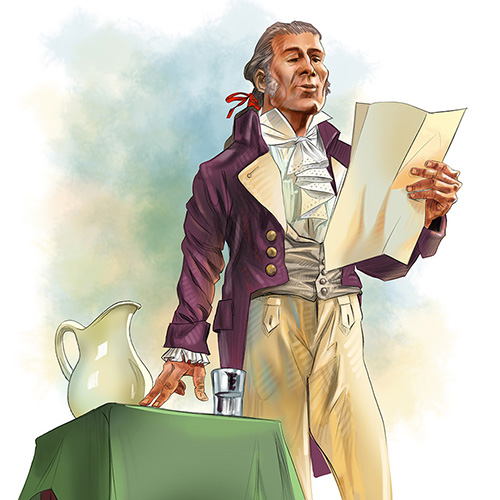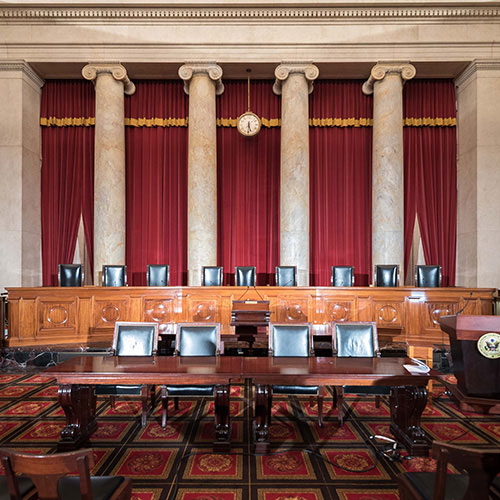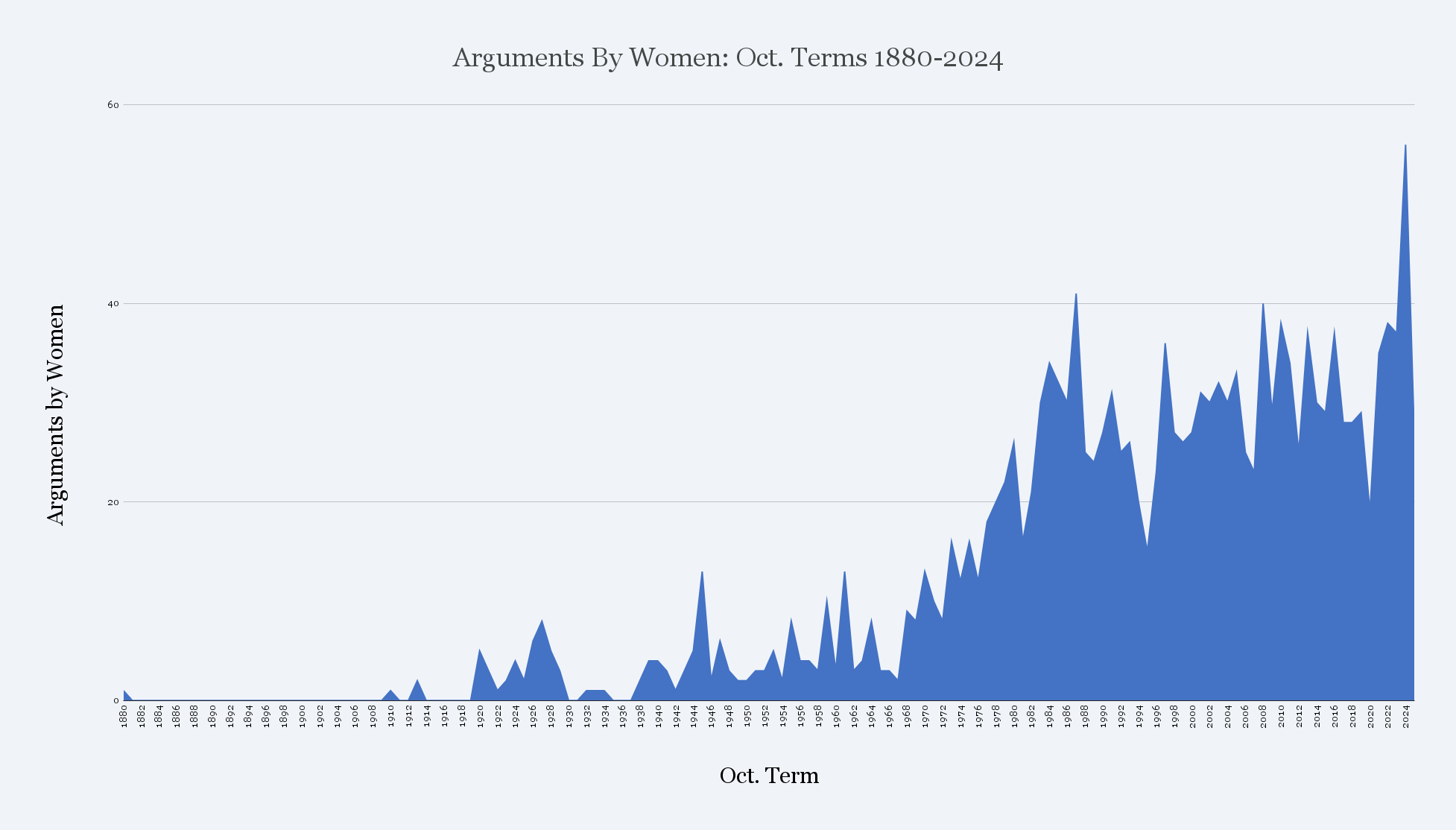
(XLS Download — Revised and Updated June, 2024)
By Marlene Trestman
Revised and Updated: October 3, 2025
While writing Fair Labor Lawyer, the book-length biography of New Deal attorney and Supreme Court advocate Bessie Margolin (1909-1996), I learned much about the Supreme Court careers of other pioneering women lawyers. Only by compiling a list of the first 101 women to argue at the Supreme Court did I discover that Margolin was the 25th woman ever to do so. That list also revealed that Margolin’s 24 Supreme Court arguments earned her third place among the top women advocates of her time, right behind Mabel Walker Willebrandt and Beatrice Rosenberg, and right ahead of Helen Carloss, who argued 29, 28, and 21 arguments, respectively. As I earlier noted, the combined 102 arguments presented by this highly regarded foursome of federal government attorneys represent almost half of all arguments by women at the time. But my list of 101 women ended with arguments in April 1974, and thus it could not answer my next question: Had any other woman, in the remaining years of the twentieth century, surpassed the number of Supreme Court arguments presented by Willebrandt, Rosenberg, Margolin or Carloss?
Fueled equally by curiosity and stubbornness, and using the same methodology I employed in identifying the first 101 women, I completed the tedious yet intriguing tally of all female Supreme Court oral advocates of the twentieth century. This effort confirmed that, although several impressive female advocates came close, no other woman argued at the Supreme Court prior to the October Term of 2000 as often as any of the first fabulous four. The women with the next highest numbers of twentieth century Supreme Court arguments were attorneys Harriet S. Shapiro (17), Amy L. Wax (15), Beth S. Brinkmann (15), Kathryn A. Oberly (13), Elinor Hadley Stillman (12), and Maureen E. Mahoney (11). The effort also revealed that from October Term 1880, during which Belva Ann Lockwood became the first woman known to argue at the Supreme Court, through Katherine P. Baldwin’s April 2000 argument (her fourth), at the close of October Term 1999, a total of 518 different women lawyers presented a total of 938 arguments during those 136 years.
Having initially stopped my tally at the end of October Term 1999, I could only hope that some other curious researcher would continue the inquiry. Imagine my delight when I learned that Julie Silverbrook and Emma Shainwald picked up where I left off and completed the tally through December 2016. Silverbrook and Shainwald’s research showed that in just the first 16 years of the twenty-first century, women argued 500 times, an amount equal to more than half of all arguments presented by women during the entire twentieth century.
Since then, Professor Jerry Goldman and technology collaborator Jeff Parsons of the Oyez Project enthusiastically joined the initiative, continuing the count through the end of October Term 2018. They and other eagle-eyed reviewers caught a few pesky numbering errors, while Supreme Court Librarian Jill Duffy spotted the omission of several female advocates, all of which prompted me to reexamine and update the list. The results of that effort, attached as Table 1, reveal that as of May 15, 2025, the last day of oral argument for October Term 2024, a total of 817 different women had presented arguments at the Supreme Court 1730 times.
The accompanying updated bar graph (Table 2) summarizes the numeric information in the revised and comprehensive tally. Up through October Term 1969, the number of Supreme Court arguments by women reached a maximum of 10 to 12 during each of only 5 terms. Throughout the remainder of the twentieth century, the number of arguments by women remained at or above 12 per term, with the only exceptions being October Terms 1977 and 1994, during each of which the number of arguments by women dropped to 9. Indeed, beginning with October Term 1976 (during which the number of arguments by women rose for the first time to 22) and continuing through the rest of the twentieth century, the number of arguments by women per term never dropped below 20, with the same exceptions of 9 arguments during each of October Terms 1977 and 1984. Women presented 30 or more arguments during each of 8 terms spread across the last quarter of the twentieth century (1978, 1983-1986, 1992, 1996 and 1998), and presented the century’s greatest number of arguments (40) during October Term 1986.
During the twenty-first century, thus far, the number of arguments presented by women during each term remained at or above 25 for all but three terms (2003, 2017, and 2019, with 24, 19, and 20 arguments, respectively. At the same time, the number of arguments presented by women during this century reached a maximum of 53 during October Term 2023 and 44 during October Term 2024, finally exceeding the record 40 arguments during October Term 1986.
These figures take on greater meaning when contrasted with the number of male attorneys who regularly dominate the podium in the High Court. During October Term 1986, for example, when women advocates first presented their all-time maximum of 40 arguments in any one term, men presented 306 arguments, more than 7 times the number of arguments by women. At the same time, of the 38 days on which the Court heard oral argument that term, women argued on 25 of those days, ranging in number from 1 to 3; the number of men who argued on each of the 38 days ranged from 5 to 11, with at least 8 men arguing on 24 of the days. Of the total 151 oral arguments that term, only two arguments were presented exclusively by women.
During October Terms 2023 and 2024, when women presented 53 and 44 arguments, respectively, men argued 96 and 120 times. While a comparison of the 1986 term with each of the two most recent terms reflects a dramatic increase in the relative number of arguments by women, men continue to outpace women; instead of the seven-fold difference during the 1986 term, arguments by men in the two most recent terms were about two times greater (1.8 and 2.3, respectively) than those presented by their female counterparts. Of the combined total 82 days of arguments during the 2023 and 2024 terms, at least one woman argued on 54 days. Between both terms, there was only one day on which all arguments were presented exclusively by women (March 26, 2024), while men were the exclusive presenters of arguments on each of 27 days.
As reflected in Table 1, the voices of women advocates were prominent on other occasions. Women argued against (or with) other women in the same cases 55 times during the twentieth century, and 110 times thus far during the twenty-first century. In October 1955, Gloria Agrin and Blanch Freedman became the first women to argue against each other. Nukk v. Shaugnhessy, 350 U.S. 869 (1955). Notably, in April 1969, April 1970, and November 1970, Eleanor Jackson Piel and Maria L. Marcus argued and then twice reargued against each other in Samuels v. Mackall, 401 U.S. 66 (1971).
The largest number of women advocates ever to argue on the same day was five, which has occurred only once in the Court’s history. On April 19, 1988, Susan S. Dickerson, Mandy Welch, Maureen Mahoney, Evalynn Welling and Ellen Viakley presented arguments in four different cases, and outnumbered the four male advocates that day. Counting Justice Sandra Day O’Connor, who joined the bench seven years earlier, that occasion also marked the first time in the Court’s history that the voices of six women were heard during oral arguments on a single day. That number of women’s voices did not reoccur until the penultimate term of the century. On January 12, 1999, four women, Verna L. Williams, Barbara D. Underwood, Barbara B. McDowell, and Donna D. Domonkos (and two men), argued two cases to a Supreme Court that included not only Justice O’Connor but also Justice Ruth Bader Ginsburg.
It wasn’t until Justice Kagan joined Justices Sotomayor and Ginsburg on the bench for the October 2010 Term that the voices of six women were again heard during oral arguments; it happened for the first time on March 1, 2011 when Leondra Kruger, Carolyn A. Kubitschek, and Melissa Arbus Sherry presented argument in two different cases.
In October 2022, when Justice Brown-Jackson took her seat alongside Justices Kagan, Sotomayor, and Coney Barrett, the Court included four female justices for the first time in history, paving the way for the voices of seven women to be heard on October 31, 2023. Before the 2023 term ended, on February 21, 2024, a record-setting eight women (four advocates and four justices) spoke during a single day’s arguments, an event that recurred twice more that term and once again in the 2024 term.
The Court’s 2024 term made history in another way regarding the gender of its advocates. On December 4, 2024, in United States v. Skrmetti, the Court heard from Chase Strangio, the first openly transgender person to argue before it. Mr. Strangio’s argument, in a case involving the right of minors to gender-affirming medical care, underscores not only the importance of gender diversity among the lawyers who help shape the court’s rulings, but also the essentially binary and constrained nature of this inquiry. Respecting the non-binary identity of advocates provides a strong reason for the Court to institute a process for counsel to indicate their preferred honorific and pronouns.
As this extensive exercise was originally prompted by my quest to set straight Bessie Margolin’s Supreme Court argument record, it seems only fitting to continue to tie up loose ends. As of October 3, 2025, only 13 women have argued at the Supreme Court 20 times or more, and a total of 30 women have argued 10 times or more. To this day, only 7 of them have presented more arguments than Margolin.
| Name | Total Arguments | Date Achieved |
|---|---|---|
| Lisa S. Blatt | 54 | April 28, 2025 |
| Elizabeth B. Prelogar | 35 | January 10, 2025 |
| Patricia A. Millett | 32 | March 18, 2013 |
| Nicole A. Saharsky | 32 | April 2, 2025 |
| Mabel Walker Willebrandt | 29 | April 11, 1933 |
| Beatrice Rosenberg | 28 | April 21, 1971 |
| Beth S. Brinkmann | 26 | February 28, 2022 |
| Bessie Margolin | 24 | December 8, 1965 |
| Barbara D. Underwood | 23 | November 3, 2021 |
| Sarah E. Harrington | 22 | December 7, 2020 |
| Helen Carloss | 21 | November 6, 1945 |
| Maureen E. Mahoney | 20 | December 2, 2008 |
| Ann O’Connell Adams | 20 | January 14, 2019 |
| Ginger D. Anders | 19 | October 13, 2021 |
| Barbara B. McDowell | 17 | February 8, 2004 |
| Harriet S. Shapiro | 17 | March 19, 1984 |
| Ginger D. Anders | 17 | October 13, 2021 |
| Erica L. Ross | 16 | April 22, 2025 |
| Amy L. Wax | 15 | April 18, 1994 |
| Kathryn A. Oberly | 14 | October 3, 1992 |
| Deanne E. Maynard | 14 | April 26, 2017 |
| Rachel P. Kovner | 13 | March 25, 2019 |
| Elinor H. Stillman | 12 | December 1, 1982 |
| Leondra R. Kruger | 12 | January 18, 2012 |
| Elaine J. Goldenberg | 12 | April 18, 2017 |
| Melissa A. Sherry | 12 | Nov. 4, 2024 |
| Kathleen M. Sullivan | 11 | November 1, 2016 |
| Colleen R. Sinzdak | 11 | November 13, 2024 |
| Cornelia T. L. Pilliard | 10 | December 9, 2009 |
| Pamela S. Karlan | 10 | October 31, 2023 |
If she were still alive, I am certain that Bessie Margolin would congratulate her sister advocates on reaching their historic milestones, and would heartily welcome more women to the podium and the bench.
Marlene Trestman is the author of Fair Labor Lawyer: The Remarkable Life of New Deal Attorney and Supreme Court Advocate Bessie Margolin (LSU Press, cloth 2016, paperback 2020). A former Special Assistant to the Maryland Attorney General, Trestman received the Supreme Court Historical Society’s Hughes-Gossett Award for “Fair Labor,” her 2012 article on Margolin, which was published in the Journal of Supreme Court History. In 2013, the Journal published “Addenda to ‘Fair Labor,'” Trestman’s proposed methodology for counting the Supreme Court arguments of historic advocates, and in 2014 posted online her list of “The First 101 Women to Argue at the Supreme Court.”
1 For additional information about the “fabulous four,” see Marlene Trestman, “Willebrandt, Carloss, Margolin, and Rosenberg: Four 20th Century Superstars of the Supreme Court Bar,” 101 Women Lawyers Journal 19-23 (Summer 2016).
2 As reflected by the errors and omissions in the prior tallies that were identified and are now corrected, the process of identifying and counting all female advocates remains fraught with opportunities for mistake, including those arising from simple miscounting to changes in surname that arise from marriage or divorce. Consequently, I continue to welcome corrections.
3 Patricia A. Brannan and Deborah T. Garren were the only counsel to present argument in Shaare Tefila Congregation v. Cobb on February 25, 1987, as were Gaele M. Barthold and Catherine M. Harper in Pennsylvania v. Finley on March 2, 1987.
4 I acknowledge that this inquiry accepts and reinforces an outdated binary conception of gender. As expressed by Jennifer C. Mika and Nancy Leong in their gender disparity studies, this approach “obscures, for example, transgender identification, or identification by those who do not consider themselves either men or women.” See Mika, “The Noteworthy Absence of Women Advocates at the United States Supreme Court,” 25 Am. U. J. Gender Soc. Pol’y & L. 31, 33 n. 9 (2017), citing Mika and Leong, “The Persistent Gender Disparity in Student Note Publication,” 23 Yale J.L. & Feminism 385, 395 n.43 (2011). Despite the inadequacy of the binary gender approach, absent clear public self-identification of gender, I lack a viable way to divide individuals into more than two genders. To improve future gender-based study of advocates, and to respect the gender identity of advocates both during oral argument and as recorded in the argument transcript and Supreme Court Journal (e.g., Mr., Ms., or Mx.), the Supreme Court may wish to institute a process for counsel to indicate preferred honorifics and pronouns.
5 As of 2022, according to Lone Dissent, at least thirty men were known to have presented at least 37 to 157 oral arguments at the Supreme Court.
